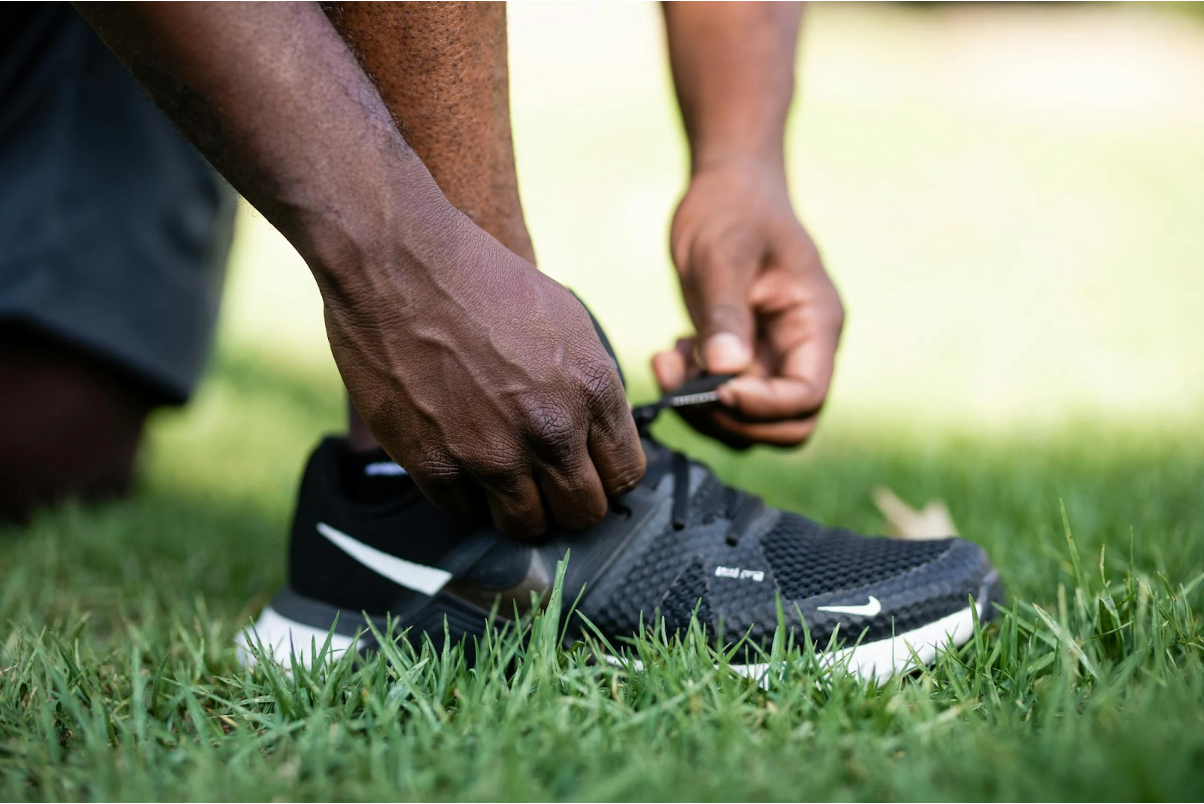Finger Joint Pain: Symptoms, Causes, Treatment & Exercises
:format(webp)/cdn.mskdoctors.com/storage/2025/3/XPnrgimDZ4R8RfegbCVnPpqoGdHryL3v.jpg)
Key Takeaways
-
Addressing finger joint pain at the first signs of discomfort can prevent progression to more severe conditions and chronic pain.
-
Regular stretching and strengthening exercises for the fingers and hands help maintain joint flexibility, improve blood circulation, and reduce stiffness.
-
Combining treatments such as anti-inflammatory medications, hot/cold therapy, adjustments, and targeted exercises typically yields better results than relying on a single approach.
-
Simple changes like taking regular breaks during repetitive tasks, maintaining proper ergonomics, and ensuring adequate hydration reduce finger joint pain and prevent recurrence.
-
At MSK Doctors, we provide a comprehensive assessment and personalised treatment plans for finger joint pain, using advanced diagnostic techniques and interventions that address the root causes.
Finger Joint Pain Overview
Finger joint pain can significantly impact daily activities and quality of life. It manifests as discomfort, tenderness, stiffness, or swelling in the joints connecting the finger bones, often making simple tasks like gripping objects, typing, or buttoning clothes challenging.
Finger joint discomfort often stems from various underlying causes, so it’s important to understand what might be triggering your symptoms. By identifying the source, you can take steps to manage and alleviate the pain effectively.
Causes can include inflammatory conditions like rheumatoid arthritis, degenerative conditions such as osteoarthritis, injuries like sprains or fractures, infections, or repetitive stress from overuse.
|
Symptoms
Pain and Swelling
Pain and swelling are often the most noticeable signs of finger joint issues. You might feel a throbbing sensation in the joints, which can intensify when you use your fingers. Swelling occurs when fluid accumulates in the tissues around the joint - leading to a puffiness that can be uncomfortable and limit movement.
Stiffness and Clicking
Stiffness is another prevalent symptom, making it difficult to bend or straighten your fingers. This stiffness can be more pronounced in the morning or after periods of inactivity. You might also hear a clicking or snapping sound when you move your fingers - which can be unsettling but is generally not a cause for alarm.
Limited Range of Motion
When finger joint pain is severe, it can restrict your range of motion. Tasks that require fine motor skills, such as buttoning a shirt or tying shoelaces, may become challenging.

Tying shoelaces may become challenging with finger joint pain.
Causes
Arthritis
Arthritis encompasses different types, including osteoarthritis and rheumatoid arthritis, each with unique characteristics. Osteoarthritis results from the wear and tear of cartilage, while rheumatoid arthritis is an autoimmune disorder where the immune system attacks joint tissues.
Injuries
Finger injuries, such as fractures, sprains, or dislocations, often lead to joint pain. These injuries often occur from accidents, sports activities, or repetitive strain. It's vital to seek prompt medical attention for injuries to prevent long-term damage.

Injuries from sports activities are a common source of finger joint pain.
Inflammatory Conditions
Besides arthritis, other inflammatory conditions can cause finger joint pain. These include:
-
Tendinitis: Inflammation of the tendons around the joint.
-
Bursitis: Inflammation of the fluid-filled sacs cushioning the joint.
-
Gout: A form of arthritis caused by uric acid crystal accumulation.
Treatment Options
Medications
Medications are often the first line of defense against finger joint pain. Nonsteroidal anti-inflammatory drugs (NSAIDs), such as ibuprofen or aspirin, can reduce pain and swelling. These are readily available over-the-counter and are usually the go-to for mild to moderate pain.
For more severe cases, doctors may prescribe corticosteroids or disease-modifying antirheumatic drugs (DMARDs), especially if arthritis is the underlying cause. These medications work by reducing inflammation and slowing disease progression.
Physical Therapy
Physical therapy involves exercises designed to improve joint function and reduce pain. A physical therapist can guide you through a routine for your specific needs, focusing on strengthening the muscles around the joint and enhancing flexibility.
Therapists may also employ techniques such as ultrasound or heat therapy to further alleviate pain. Regular sessions can lead to significant improvements in joint health and overall function.
Commitment to a physical therapy regimen can relieve symptoms and prevent future flare-ups, making it an invaluable component of a comprehensive treatment plan.
Natural Remedies
These alternatives can complement traditional treatments, offering additional benefits without the side effects often associated with medications. Incorporating anti-inflammatory foods, such as fatty fish, nuts, and leafy greens, can help reduce inflammation and support joint health. Similarly, avoiding processed foods and sugars can prevent inflammation from worsening.

A healthy diet can help you support joint health.
Supplements like glucosamine and chondroitin are popular choices for supporting joint health. These supplements can help maintain cartilage and reduce pain in some individuals.
Incorporating turmeric into your diet can also be beneficial. Its active compound, curcumin, has potent anti-inflammatory properties that can alleviate joint pain.
Exercises for Pain Relief
Joint Flexibility Exercises
Flexibility exercises are designed to maintain and improve the range of motion in your finger joints. They can help reduce stiffness and make daily tasks easier to perform. Here is a simple exercise to get started:
-
Start by holding your hand upright with fingers extended.
-
Slowly bend your fingers to touch the top of your palm, then straighten them again.
-
Repeat this exercise 10 times for each hand.
Performing this exercise daily can help maintain joint flexibility and reduce discomfort. It's important to perform each movement slowly and gently to avoid strain.
Strengthening Drills
Strengthening exercises like finger curls and finger spreads aid in supporting the muscles around your finger joints. These exercises can help reduce pain and prevent future injuries by enhancing the stability of the joints.
Stretches for Finger Joints
Stretching exercises like finger extensions and table finger stretches are vital for maintaining flexibility and reducing tension in the finger joints. Regular stretching can help prevent stiffness and improve overall joint function.
Managing Finger Joint Pain With MSK Doctors
At MSK Doctors, we understand that managing finger joint pain requires a comprehensive approach. Our team of experts is dedicated to helping you achieve optimal joint health through a combination of medical expertise and personalised care.
Our approach involves assessing your condition, identifying the root cause of your pain, and developing a unique treatment plan that addresses your specific needs. We believe in empowering our patients with the knowledge and tools necessary to manage their joint health effectively.
Early intervention is crucial in managing finger joint pain. Addressing symptoms promptly can prevent further damage and improve long-term outcomes. At MSK Doctors, we emphasise the importance of seeking medical attention as soon as you notice any signs of joint pain.
By working closely with our patients, we aim to empower them to make informed decisions about their joint health.

We ensure that each patient receives the care and support they need to manage their condition effectively.
If you're experiencing finger joint pain, don't wait to seek help. Book a consultation with MSK Doctors today and take the first step towards better joint health.
Frequently Asked Questions (FAQ)
What are the first signs of finger joint pain?
The initial signs of finger joint pain often include discomfort or tenderness in the joints, especially during or after movement. You may also notice swelling or stiffness, which can make it difficult to perform everyday tasks.
How does arthritis affect finger joints?
Arthritis can cause inflammation and damage to the cartilage in your finger joints, leading to pain, stiffness, and reduced mobility. Over time, this can result in joint deformities and a loss of function.
What home remedies help alleviate joint pain?
Several home remedies can help alleviate joint pain, including applying ice or heat to the affected area, practicing gentle exercises, and incorporating anti-inflammatory foods into your diet. Supplements like glucosamine and turmeric can also provide relief.
Why is exercise important for joint health?
Exercise is crucial for maintaining joint health, as it helps improve flexibility, strength, and overall function. Regular physical activity can reduce stiffness and pain, making it easier to perform daily tasks.
How can MSK Doctors assist in managing joint pain?
At MSK Doctors, we offer a comprehensive approach to managing joint pain, combining medical expertise with personalised care. Our team of specialists works closely with you to design a unique treatment plan that addresses your specific needs.
:format(webp)/cdn.mskdoctors.com/storage/2025/6/OIhP3Aff5vuNs8WxojxagvFNskTqd0Op.jpg)
:format(webp)/cdn.mskdoctors.com/storage/2025/5/ZfQ6gzRIzszsowJqOQGDJDwD3J4MbpN9.jpg)
:format(webp)/cdn.mskdoctors.com/storage/2025/5/wJNi2HzO1mX0VClrU6WeaXZQKmN5sSmZ.jpg)
